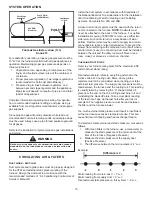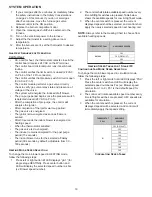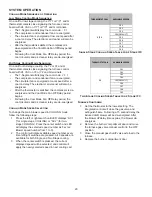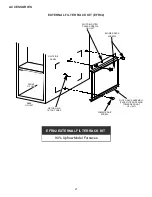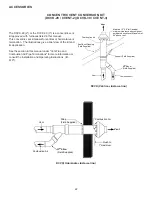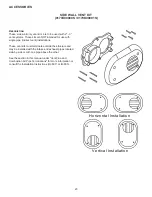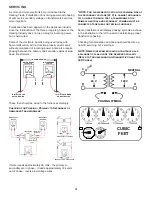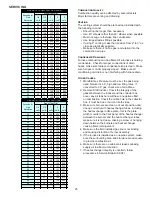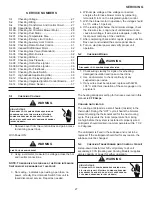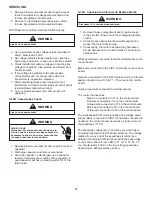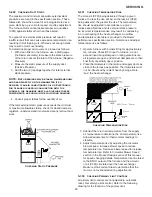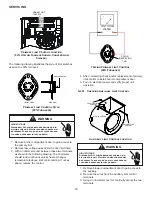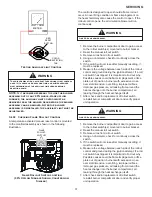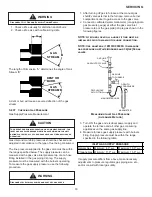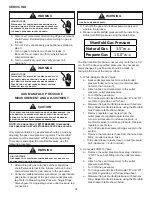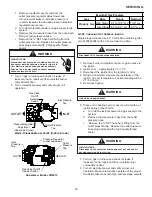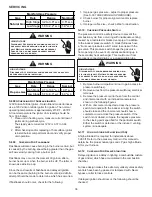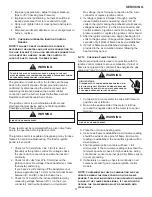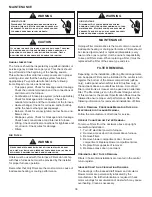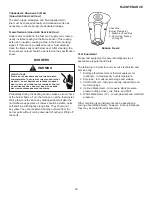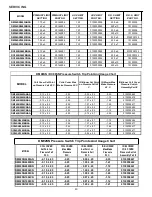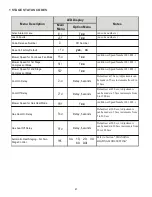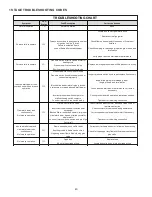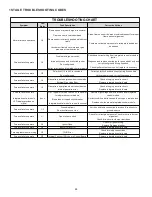
29
S-200 Checking Duct Static
The maximum and minimum allowable external static
pressures are found in the specification section. These
tables also show the amount of air being delivered at a
given static by a given motor speed or pulley adjustment.
The furnace motor cannot deliver proper air quantities
(CFM) against statics other than those listed.
Too great of an external static pressure will result in
insufficient air that can cause excessive temperature rise,
resulting in limit tripping, etc. Whereas not enough static
may result in motor overloading.
To determine proper air movement, proceed as follows:
1. With clean filters in the furnace, use a draft gauge
(inclined manometer) to measure the static pressure
of the return duct at the inlet of the furnace. (Negative
Pressure)
2. Measure the static pressure of the supply duct.
(Positive Pressure)
3. Add the two (2) readings together for total external
static pressure.
NOTE: Both readings may be taken simultaneously
and read directly on the manometer if so
desired. If an air conditioner coil or Electronic
Air Cleaner is used in conjunction with the
furnace, the readings must also include theses
components, as shown in the following drawing.
4. Consult proper tables for the quantity of air.
If the total external static pressure exceeds the minimum
or maximum allowable statics, check for closed dampers,
registers, undersized and/or oversized poorly laid out duct
work.
Checking Static Pressure
S-201 Checking Temperature Rise
The more air (CFM) being delivered through a given
furnace, the less the rise will be; so the less air (CFM)
being delivered, the greater the rise. The temperature
rise should be adjusted in accordance to a given
furnace specifications and its external static pressure.
An incorrect temperature rise may result in condensing
in or overheating of the heat exchanger. An airflow
and temperature rise table is provided in the blower
performance specification section. Determine and adjust
temperature rise as follows:
1. Operate furnace with burners firing for approximately
ten minutes. Check BTU input to furnace - do not
exceed input rating stamped on rating plate. Ensure
all registers are open and all duct dampers are in their
final (fully or partially open) position.
2. Place thermometers in the return and supply ducts as
close to the furnace as possible. Thermometers must
not be influenced by radiant heat by being able to
“see” the heat exchanger.
SUPPLY
AIR
RETURN
AIR
Checking Temperature Rise
3. Subtract the return air temperature from the supply
air temperature to determine the air temperature rise.
Allow adequate time for thermometer readings to
stabilize.
4. Adjust temperature rise by adjusting the circulator
blower speed. Increase blower speed to reduce
temperature rise. Decrease blower speed to increase
temperature rise. Refer to Circulator Blower Speed
section in the Product Design section of this manual
for speed changing details. Temperature rise is related
to the BTUH output of the furnace and the amount
of air (CFM) circulated over the heat exchanger.
Measure motor current draw to determine that the
motor is not overloaded during adjustments.
S-300 Checking Primary Limit Control
All primary limit controls are nonadjustable, automatic
reset, bi-metal type limit control. Refer to the following
drawing for the location of the primary limit.
SERVICING

